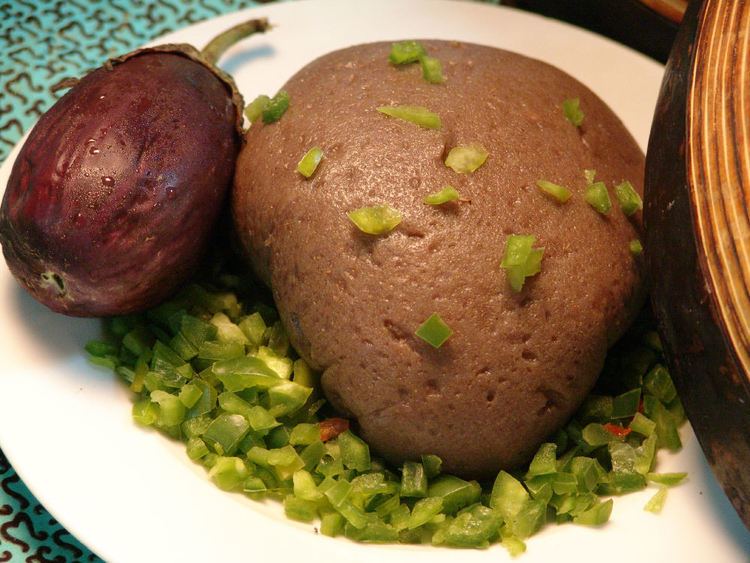 | ||
Similar | ||
Àmàlà is a Nigerian food made out of yam and/or cassava flour. Yams are peeled, sliced, cleaned, dried and then blended into a flour, also called elubo. Yams are white in colour but turns brown when dried; this gives àmàlà its colour. Àmàlà is from Western Africa and eaten mostly by the Yoruba people in Nigeria. It could be served with a variety of ọbẹ (soups), such as ẹfọ, ilá, ewédú, ogbono or gbegiri (black-eyed beans soup).
Contents
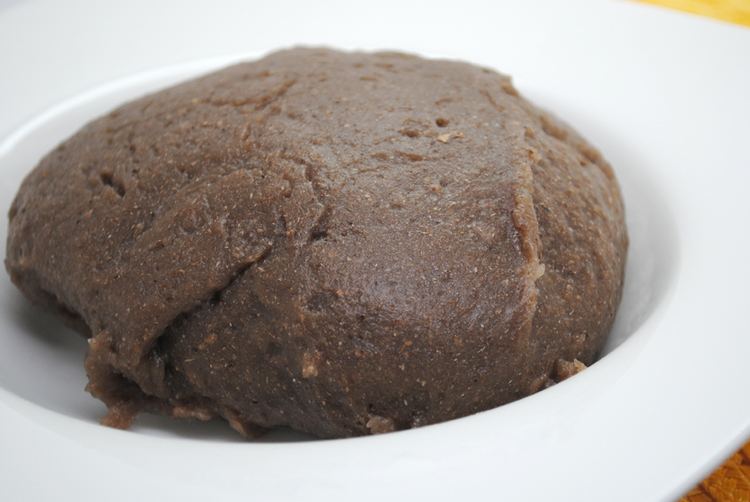
Types
There are two types of àmàlà: àmàlà isu and àmàlà láfún.
Yam flour (àmàlà isu)
This most common type of àmàlà is derived from yam. Yam, the common name for species in the genus Dioscorea, grows in Africa, Asia, Caribbean, Oceania and Latin America, but 95% of it is cultivated and harvested in West Africa. Yam can be barbecued, roasted, fried, grilled boiled, smoked and grated. Àmàlà isu is made of dried yam; this gives it a black/brownish colour when added to boiling water. Amala is high in carbohydrates and packs a lot of calories.
Cassava flour (àmàlà láfún)
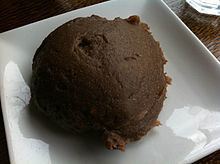
The second type is àmàlà láfún, made from cassava flour. Cassava is a woody shrub of the Euphorbiaceae (spurge) family. Cassava, and yam are the most important source of food carbohydrate in Nigeria; Nigeria is the world’s largest producer of cassava. Cassava flour when a dry powder make àmàlà láfún. Fermented and flaky, it is called garri, another common dish, most often eaten eaten by the Egba people.
Plantain flour (Amala ogede)
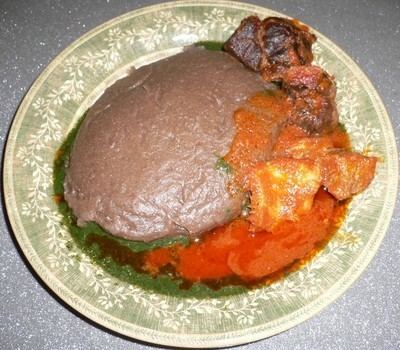
Another type of Amala is elubo ogede. The low carbohydrate level in plantain flour makes it a good food for diabetics and others who need a low-carbohydrate food. Unripe plantain is pealed, dried and grated into boiling water to become amala ogede, light brown in colour when cooked.
Preparation
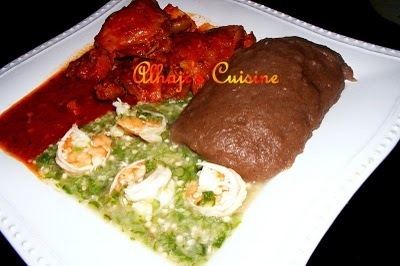
The only ingredient needed when making àmàlà is boiling water and either one of the two types of flour. Once the water has come to a boil, the heat is reduced. The flour is added and stirred until all the water is absorbed. More hot water is added, then the dough is left to simmer for approximately five minutes. Then the dough is kneaded until it has the desired texture. Kneading the dough into a smooth paste is the most difficult part of making àmàlà.
Dishes
Àmàlà can be eaten with various soups:
